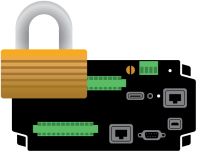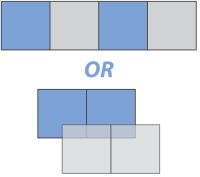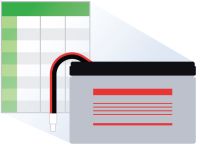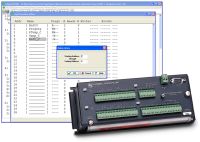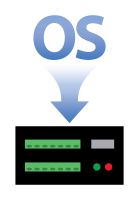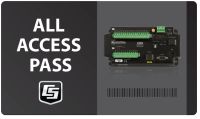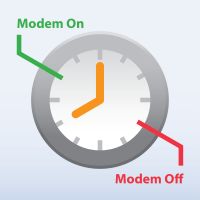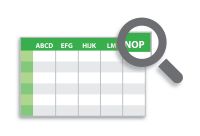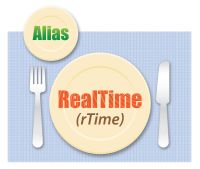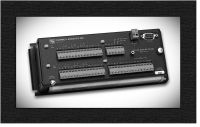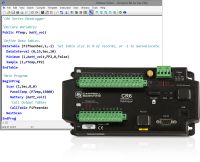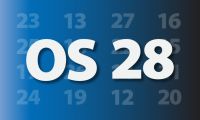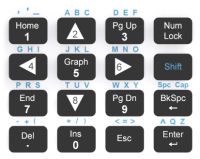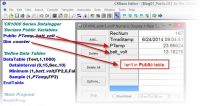The Campbell Scientific Blog Your source for useful how-to information and helpful expert advice
Displaying 1 - 20 of 21 articles authored by: Janet Albers
How to Use Data Logger Security Codes
Autor: Janet Albers | Ultima atualização: 03/04/2025 | Comentários: 4
Security codes are the oldest method of securing a data logger. They can effectively prevent innocent tinkering and discourage wannabe hackers—actions that could potentially wreak havoc on the integrity of your data. In this article, I’ll discuss the different security codes and how to use... Leia maisDaylight Saving Time and Your Data Logger
Autor: Janet Albers | Ultima atualização: 02/27/2019 | Comentários: 10
Do you need to do anything to your data logger or software to compensate for the beginning of daylight saving time? Read this short article to find out! Residents of many parts of North America, and various areas around the world, continue to observe the practice... Leia maisUnderstanding CRBasic Program Compile Modes: Sequential and Pipeline
Autor: Janet Albers | Ultima atualização: 10/25/2017 | Comentários: 6
Have you ever noticed a message saying that your CRBasic program compiled in PipelineMode or SequentialMode? What does it mean? And, when does it matter? In this article, we’ll look at these two modes. Sequential Mode Let’s start with the more straightforward mode: SequentialMode. The CRBasic Editor... Leia maisHow Much Power Does Your Data Acquisition System Need?
Autor: Janet Albers | Ultima atualização: 05/04/2017 | Comentários: 0
Are you wondering what size battery and solar panel you need to run all of the devices in your data acquisition system? How will you know if your power supply can keep pace with your needs? To get these answers, you will need to estimate the... Leia maisHow to Replace “Undefined” or “N/A” with Your Real-Time Data Values
Autor: Janet Albers | Ultima atualização: 11/30/2016 | Comentários: 0
If you use Campbell Scientific data logger support software to connect to your data logger, you may monitor your data from within the software. Have there been times when you’ve seen “Undefined” or “N/A” instead of your data values? What does that mean, and how... Leia maisHow to Know when Your Data Logger Memory Is Getting Full
Autor: Janet Albers | Ultima atualização: 09/15/2016 | Comentários: 2
It’s common for our customers to wonder when their data logger memory is going to be full, what will happen to their data when the memory is full, and what they should do about it. After all, your data is specific to your application and... Leia maisThe Best Way to Edit Input Locations in Edlog Programs
Autor: Janet Albers | Ultima atualização: 06/08/2016 | Comentários: 0
If you have one of our retired data loggers that uses the Edlog programming language, do you know the best way to change an Input Location name? It’s possible that you may want to use a different name or insert a name where one is... Leia maisHelpful Hints for Updating Your Data Logger's OS
Autor: Janet Albers | Ultima atualização: 02/10/2016 | Comentários: 0
Periodically we release new operating systems (OSs) that include new functions and instructions, as well as enhancements or bug fixes for existing functions and instructions. If you are asked to update your OS or need a newly added feature for your application, this article provides... Leia maisHow to Programmatically Access Stored Data Values
Autor: Janet Albers | Ultima atualização: 01/13/2016 | Comentários: 16
After you store measurements and other data in your data logger’s tables, how do you access that data to perform operations in your CRBasic program? Where can you get an all-access pass to your data? This article will explain how you can use a special... Leia maisUse Time Intervals for More than Storing Data: Decisions and Control
Autor: Janet Albers | Ultima atualização: 12/30/2015 | Comentários: 2
We all know that Campbell Scientific data loggers are really good at taking measurements and storing data. But did you know that they can also make decisions and control other devices? Often, device control is done based on a time interval. This article briefly illustrates... Leia maisHow to Rename Field Names for Easier Data Identification
Autor: Janet Albers | Ultima atualização: 11/11/2015 | Comentários: 0
When you view your measurement data in tabular format, such as in View Pro or similar software, are your column headings, or field names, helpful to you? At a glance, do your field names quickly identify the data in the columns? If not, you may... Leia maisServing up the RealTime() Instruction with a Side of Alias Declarations
Autor: Janet Albers | Ultima atualização: 10/07/2015 | Comentários: 2
CRBasic has a full menu of instructions to help you write or edit your data logger program. This article offers a main course of scheduling your data logger actions using the RealTime() instruction with a side dish of making your program easier to read with... Leia maisMaking Sense of an Edlog Program File for Your Retired Data Logger
Autor: Janet Albers | Ultima atualização: 09/09/2015 | Comentários: 0
Our retired data loggers are still in use, and some of them use the Edlog programming language. Do you have an Edlog data logger with a .dld compiled program file that you don’t know how to read? Does your .dld file have codes that you... Leia mais5 Things to Know before Discussing Your Data Logger Programming Issue
Autor: Janet Albers | Ultima atualização: 08/26/2015 | Comentários: 0
If you need help programming a Campbell Scientific data logger, here are some things you can do to have a more productive conversation with a Customer Support and Implementation Engineer. At a minimum you’ll want to know: What data logger you’re working with—such as a CR6, CR1000,... Leia maisThe Benefits of Using Constants in CRBasic
Autor: Janet Albers | Ultima atualização: 08/05/2015 | Comentários: 0
Why should you use a Constant declaration in your CRBasic program? What is a Constant anyway? In a previous article ("Going Public with Your Variables in CRBasic"), we talked about the Public and Dim variable declarations. Variables are just that—variable; they change. Constants, on the other hand, don’t change;... Leia mais4 New Ways to Use Array Notation: Copying or Transposing
Autor: Janet Albers | Ultima atualização: 07/21/2015 | Comentários: 0
Copying or transposing has become easier with OS 28 (CR6 OS 1). This new operating system enables you to copy portions of an array to a new location, such as when transposing rows and columns. In this example we start with A(3,2) (3 rows, 2 columns) initialized as... Leia mais4 New Ways to Use Array Notation: Complex Scaling
Autor: Janet Albers | Ultima atualização: 07/01/2015 | Comentários: 0
You can perform more complex scaling in an array without needing a For/Next loop. To take advantage of this feature, use OS 28 (CR6 OS 01) or later. In this example program, a unique set of multipliers and offsets is applied to the column of an... Leia mais4 New Ways to Use Array Notation: Initializing Multi-Dimensional Arrays
Autor: Janet Albers | Ultima atualização: 06/10/2015 | Comentários: 0
Initializing variables within an array is more flexible than ever with OS 28 (CR6 OS 1). You can think of a single dimensioned array as numbers in a column. Two dimensions, in comparison, puts numbers in rows and columns. The third dimension is a page. For example:... Leia maisHow to Find and Insert Characters Using a Keyboard Display
Autor: Janet Albers | Ultima atualização: 05/29/2015 | Comentários: 0
A keyboard display, such as the external CR1000KD or on-board display of the CR850 and CR3000, is a powerful tool you can use in the field. A keyboard display enables you to interrogate and program a data logger independent of other telecommunication links. Most keys on... Leia maisGoing Public with Your Variables in CRBasic
Autor: Janet Albers | Ultima atualização: 05/29/2015 | Comentários: 0
When programming your Campbell Scientific data logger, have you ever wondered whether you should be using a Dim variable declaration or a Public one? What is the difference between them, and when is it best to use each one? Dim and Public variables are temporary holding... Leia mais











